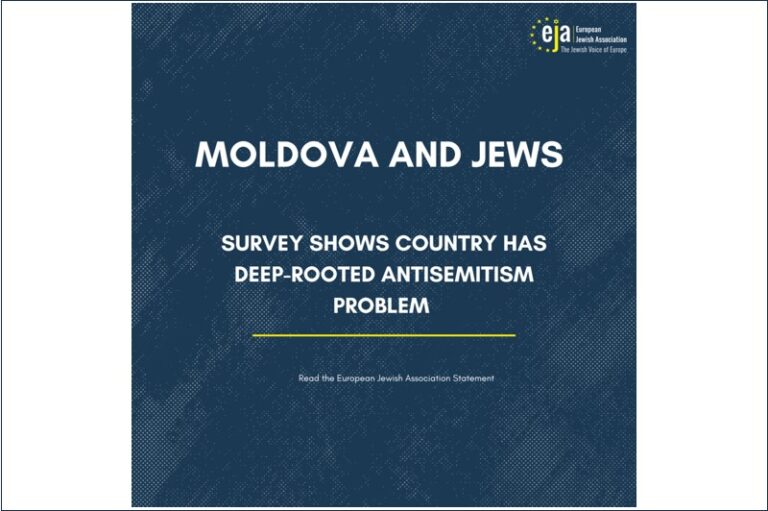Jewish Viewpoint”, Jews in their own eyes and the eyes of others, essays and researches, Sifriat Hapo’alim Publishing Company, 2002.
Professor Dina Porat is the Head of the Stefan Roth Institute for Research on Current Antisemitism and Racism at the University of Tel-Aviv, and has served as an expert witness at trials in which definitions of antisemitism were required. The paper before us on the definitions of antisemitism is part of work done by Prof. Porat and Dr. Roni Schtauber to be called “Antisemitism as we have defined it to our students”.
Antsiemitism is a term that is difficult to define for several reasons: because of the inherent emotional dimension; because it was created out of a complicated background with religious, political and ideological motivations and components of this background have continued to exist but changed from period to period; because when Wilhelm Mar, the “patriarch of antisemitism, coined it in the Germany of 1879, both Jews and other Semitic peoples, especially Arabs, were included in it, thus creating a problem from the very beginnings of its use. Mar apparently chose it because of its ostensibly scientific ring (1), and it indeed “caught on” and has been used ever since by the entire world and has become an expression that is difficult to replace despite its problematic nature. Neither the establishment of the State of Israel, its relations with Jewish communities nor the attitude of antisemitic circles towards it and towards the Zionist Movement have not made defining antisemitism any easier.
In view of this historic development, and first of all because of the varied use that was made by antisemitism serving political and other needs for generations, the phenomenon of antisemitism was redefined in various periods and at various times in different ways depending on the time and the place and these definitions reflect the changing needs. This served not only the needs of those who utilize antisemitism and motivate it, but also served the needs of the society or the State defining the term. Many of the definitions can be found in lexicons and encyclopedias which interpret the definitions according to the sort of information they provide the reader with, and it may well be through them that one can trace the changes in the definition of antisemitism. Moreover, these definitions, more than any others, reflect the spirit of the society as well as the consensus created within them, after all the encyclopedia and the lexicon are the results of the joint efforts of the staffs of the institutes which produce them. Based on these assumptions, we shall try to examine some of the definitions from the end of the 19th Century, some definitions in Jewish encyclopedias and some Anglo-American ones from the beginning of the 20th Century on as well as some of the Israeli encyclopedia. Finally, we shall ask whether there truly exists an agreed definition for “new antisemitism” which has been under discussion since September 2000, when the latest wave of antisemitism began.
The 1882 edition of the great Brookhouse Lexicon provided a definition of antisemitism that has changed very little in subsequent editions including in those which appeared following World War II: “anyone who hates Jews or opposes Judaism in general, and struggles against the character traits of the Semites”. Some of the components of that definition: one is the emotional component and that is the hatred of Jews. The inclusion of this emotion in the definition in a respected lexicon means recognition of the fact that a phenomenon of this kind had existed in society as a permanent, or at least visible, fixture, recognized it and included in the definition. In addition, this definition refers to the hatred of a Jew as a person, but there is no hatred of Judaism here as a concept, only opposition to it without providing a definition. The second definition (which was removed from the post World War II editions) arose from this: an antisemite is a person who fights the character traits and intentions of the Semites. (2) Here there is identification and perhaps an intermingling of Semites and Jews, which is characteristic of the beginnings of the racist theory in the second half of the 19th Century. It was only later that the Jews were differentiated from the other Semitic Peoples, especially the Arab Peoples, and in the meantime in the definition presented here the Jews are not merely Semites but characterize Semitism, especially the evil in it. Also characteristic of the racist theory is the identification of character traits with groups of people: the Semites or the Slavs or the Latinos have certain permanent character traits which cannot be changed by education and environment. The theory of racism is essentially anti-Christian in nature since it does not recognize equality among people and the right of the individual to the mercy of God, but concerning the Jews it perpetuated the image created by the Church: negative characteristics which have been referred to over centuries and became firmly ensconced in the society’s consciousness. Another concept that became firmly implanted in the consciousness, and appears in the definition under discussion, is that the Semites, i.e. the Jews, have certain characteristics that the antisemites are fighting against. The essence of these characteristics is the ostensible desire to harm Christian society. One should not forget the definition in Brookhouse, published about a decade before the publication of “The Protocols of the Elders of Zion” in the 1890s, this is a period when the idea that the Jews are plotting to take over the world are taking steps to realize their ambition in a planned and organized manner began to take shape.
In 1887, Theodore Pritesch, also one of the “Founding Fathers” of modern-political antisemitism who lived to a ripe old age and served as a kind of bridge between that concept and the Nazi Party, wrote his “Antisemitic Catechism”. This provides a kind of Commandments for Antisemitism, Commandments of Commission and Omission. The book appeared in dozens of editions throughout his long life (3). This was also a clear definition: “anti – to oppose, Semitism – the essence of the Jewish race, therefore – the struggle against Semitism”. This is still a racist definition, because of the identification of Jew as Semite and in essence it relates to the Jewish collective, defined as a race. The emphasis here is on the struggle against antisemitism against the background of the years that have passed since Wilhelm Mar coined the term. Almost to the end of the 19th Century this was a period of antisemitic activity defined as political antisemitism – the emergence of political parties with antisemitic platforms, or at least with an antisemitic plank in those platforms. In most of the countries of Western and
In World War II, the Nazi Party leadership had to deal with the question of the use of the term “antisemitism”. On 17th May
Indeed, in 1944 Josef Goebels, the Minister of Propaganda, instructed the radio and the press to stop using the word antisemitism since it no longer fitted the needs of the Third Reich, and to replace it with the words “Jew” and “Judaism” or “anti-Jewish and anti-Judaism”. This is not an attempt at creating another definition but rather to dismantle the existing one: Rosenberg and Goebels did away with the concept of Semitism as identical with Judaism created in the 19th Century. Firstly, because Nazi Germany most definitely differentiated between Arabs and Jews and reached agreements with the Grand Mufti of Jerusalem, who made lengthy visits to
In 1901, the first edition of the 12-volume “Jewish Encyclopedia”
appeared in
Nevertheless, in the definition of antisemitism in the Jewish Encyclopedia, written by Gutthard Deutch, a Professor of Jewish History in Cincinnati, emphasis is placed on the term’s racist, and not its religious, origins and on the characterization of the Jews as believed by those supporting the racist idea: “greed, special talent for ‘making money’, flinching from hard work, clannishness and intrusion everywhere, lacking in social graces and especially lacking in patriotism. In the end, the term serves as the justification for anger at any crime or disgraceful act made by a Jew as an individual”. (5) There is an oblique statement here to the effect that these are traits that only a narrow-minded bigot steeped in prejudice would accuse the Jews of having, and that Jews, collectively and individually, are not really like that. A statement like that was necessary at a time when emigration brought to America hordes of Jews some of whom crowded into the slum neighborhoods of the large cities, they worked hard and lived in poverty, their customs and dress drew attention and aroused suspicions. This has nothing to do with characteristics, say the Jewish scholars, but rather with conditions and circumstances, which would change in the future. In other words – “Give us a chance”. Indeed, other entries in the encyclopedia discuss the origins of the collective characteristics of the Jewish People and the question of whether it really has such characteristics and whether they can be attributed to his living conditions. The entry also discusses its positive characteristics such as its high level of culture, its amazing adaptability and its contribution to world culture. The question of whether the Jews are really a race is also touched upon. Another entry follows in the footsteps of Herzl and Pinsker who thought that antisemitism had its roots in exile and viewed Jewish nationalism as the solution to it, a political solution, but first of all a spiritual and moral solution. The First Zionist Congress had been held only four years before the publication of the encyclopedia, and its mark, especially the mark of Herzl’s meteoric rise in the firmament of Jewish history, was strong and thought provoking.
It is possible, although we have no proof of this, that in the 11th Edition of the Encyclopedia Britannica, some criticism is leveled at the tendency evident in certain entries in the Jewish Encyclopedia to stress the religious element: “The Jews claim”, writes the entry’s author Lucien Wolff, one of the most prominent member of the Anglo-Jewish community at the beginning of the 20th Century, “that antisemitism is simply an atavistic reawakening of the hatred of Jews in the Middle Ages”. In other words, it has no place in the modern world of the new Century, since atavism is a throwback to the emotions and phenomena of past generations”. Wolff does not accept this optimism which had its roots in the decline of antisemitism from the last decade of the 19th Century until the outbreak of World War I, and also in the stability of
should rather see the true nature of antisemitism and what role it can play in the political struggles and the tensions between various groups, even at that period. (6)
Other Jewish encyclopedias published during the 20th Century, including the Encyclopedia Judaica, with the lengthy entry written by the historian Benjamin Eliav (7), do not continue this argument. They present definitions which resemble each other, including the source of the term, encompassing its various sources, religious, economic, social and racist even the animosity and even the hatred that the term expresses. The definition given in the “Encyclopedia of the Holocaust” in the entry “Antisemitism” written by Israel Guttmann, adds a crucially important dimension: “Throughout the generations, concepts, fantasies and accusations have stuck to the term that portrayed a negative cognitive and emotional web, at times independent of Jewish society that was fashioned and existed in realty”. (8) The subject of the gulf between the real and the imagined, and the political use made of this gulf, which the essence of antisemitism, will be discussed further on.
Following World War II, the non-Jewish encyclopedias in the English-speaking world took on the question of the definition of antisemitism. The “Everyman’s Encyclopedia” published in
Another example, one of many, also provides proof of that frame of mind: About a year later, Eleanor Roosevelt wrote a foreword to the first edition of Anna Frank’s diary in English. She, too, makes no mention of the Jews, the Holocaust or the Germans, or even that Anna had been Jewish, and in the play, a muted and adapted version of the diary, which opened on Broadway in 1955, the Germans are not mentioned at all, not even at the end. (10)
No less striking is the definition appearing in the “Everyman’s Encyclopedia” according to which the rise of antisemitism as the result of the accumulation of wealth and power by the Jews is presented as fact, which the writer does not disagree with, on the contrary, it is clear to him that in the Jews had become rich and powerful in the second half of the 19th Century to the extent that they gave rise to general dissatisfaction regarding them. Does this statement not contain the intimation that the Jews actually brought antisemitism on themselves? The question of property and power interests the English-speaking countries more than the question of religion or race, and again, is there not a warning to the non-Jewish world inherent in this definition? One must not lose sight of the fact this definition is provided in the “Everyman’s Encyclopedia” and is meant to reach a very broad audience. The Hebrew Encyclopedia says of this (see further on) that “almost every hatred of a minority has inherent in it a certain expression of strong powerful urges of possession and rule”.
In the mid-1960s, there was a surprising turn of events. In 1966, Webster’s Dictionary of the English Language, the Bible of all the English language dictionaries, published a new edition with the following definition of antisemitism: “animosity towards Jews as a religious or racial minority, often accompanied by social, economic and political discrimination”. Thus far there is nothing new, but the following is added further on: “opposition to Zionism, sympathy for those opposed to the State of Israel”. (11) The time is just prior to the Six-Day War, a time when the State of Israel is under threat, first of all in the United Nations, from the Soviet Bloc which unequivocally supports the Arab States in their efforts to get rid of a Jewish State (and is also trying to gain support from the
Before Israel’s stunning victory in 1967 on the one hand, and before the problem of the Territories was created, on the other hand, Israel is perceived in the Western world as a small democratic country the fruit of the longing of a People for its homeland which does not enjoy fair treatment in international frameworks and must be protected from its attackers and adversaries, therefore antisemitism=anti-Zionism and both are discrimination.
About a decade after the establishment of the State of Israel, the fourth volume of the Hebrew Encyclopedia was published in which an entry, broad in scope, on antisemitism appeared whose first part was written by Ben-Zion Netanyahu. After the requisite discussion on the essence of the term, its meaning and its history, Netanyahu adds a new tier to the subject which is “hatred of the other, hatred of the alien and hatred of the weak” and he defines antisemitism as a kind of hatred of minorities which includes all three of these hatreds, “in a more forceful and consistent form than in any other form of hatred of minorities”. (12) This is in essence a Zionist definition, and, like Zionism, it is optimistic: a state of being different, alien and weak can be changed, and it could change with the abolition of the Diaspora and the establishment of the State of Israel. As soon as the Jews have a State of their own, they are like all the other Peoples that have their own country, they are not different from others; as soon as they have their own State even those who still do not live in it are like any Irishman or Italian or immigrant living outside his home country, and they are no longer foreigners whose foreigner status is different from foreigners; and a soon as this State becomes strong – the weak will also gain in strength and the State will be their support where ever they are. This was the prophesy of the Founding Fathers of Zionism, and it was the hope the State’s founders and citizens, at least for the first twenty years after its establishment. Its existence would eliminate the basic elements that had given rise to antisemitism, and this would also apply to the other elements of time and place.
However, about a decade later, an article by Shmuel Ettinger appeared in Haaretz intended to revolutionize that concept. In his analysis of “The Roots of Antisemitism in Modern Times” he described it as a reflection of the stereotype of the Jew created over hundreds of years and had become part of various expressions of culture. Because the image became an intrinsic part of the culture – in sculpture, in painting, in masses and in Passions, in popular sayings and in various linguistic expressions, it would never be uprooted and would continue feeding antisemitic expression in the future. (13) And to that one may add that it is impossible to expect that expressions that became intrinsic elements in this culture to be eradicated, this also applies to antisemitism and trying to eradicate them would be an effrontery to these elements, and even the Israel Philharmonic Orchestra plays these works almost in their entirety as part of this view.
In saying all of this, Ettinger in essence determined that Zionism will not solve the problem of antisemitism and will not destroy it, because there is no connection between them: the image of the Jew and that of the State of Israel and its citizens exist separately. Thus, today there is the phenomenon of antisemitism without Jews, such as that for example in
Two years later, Professor Ya’akov Tori and his students at
In the summer of 1979 the “Ma’ariv Trial” was held in the Tel-Aviv District Court in which the newspaper was sued by two members of the British Parliament. Their book “Tell It Not in
Since October 2000 with the outbreak of the Second Intifadah and the events which followed, a new term began to be used – “New Antisemitism”. The events of October 2000, which included a wave of violent antisemitism that lasted for several weeks, were followed by the events of September 2001, the Durban Conference and the 11th September attacks in the
Already in 1986, Bernard Lewis defined antisemitism in his book “Semites and Antisemites”. (16) The components of his definition have already been discussed here, but the question arises again today, and not only that question. In the course of ongoing discussion aided and abetted by radical Islam, the question arose once again, as it did in
We will conclude with the words of two intellectual giants: Jean-Paul Sartre and Bertrand Russell, who wrote during World War II and immediately after it respectively, defining antisemitism and antisemites with disgust. Sartre defines it as “blaming the presence of the Jews for all the disasters befalling the individual and the public, and making suggestions on what steps to take to improve the situation from limiting their rights up to their deportation and annihilation”. He absolutely refuses to see antisemitism as an opinion, since the antisemite is “a person who fears, it is not the Jews that he fears, but rather himself, his consciousness, his liberty, his instincts, the need to admit responsibility for what he had done, his solitude, the changes that might affect him, society and the world […] in short, antisemitism is the fear for the condition of man”. (17) Bertrand Russell put it very bluntly: “If Hitler had been a courageous man, he would not have been an antisemite.





